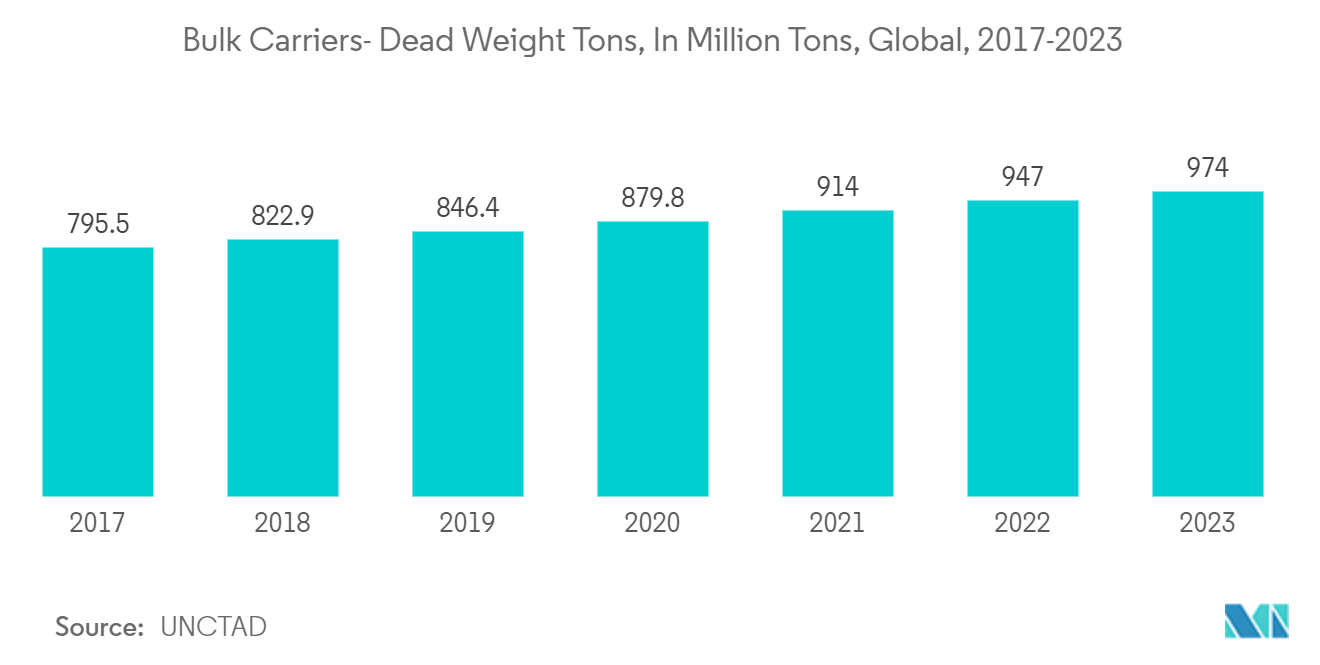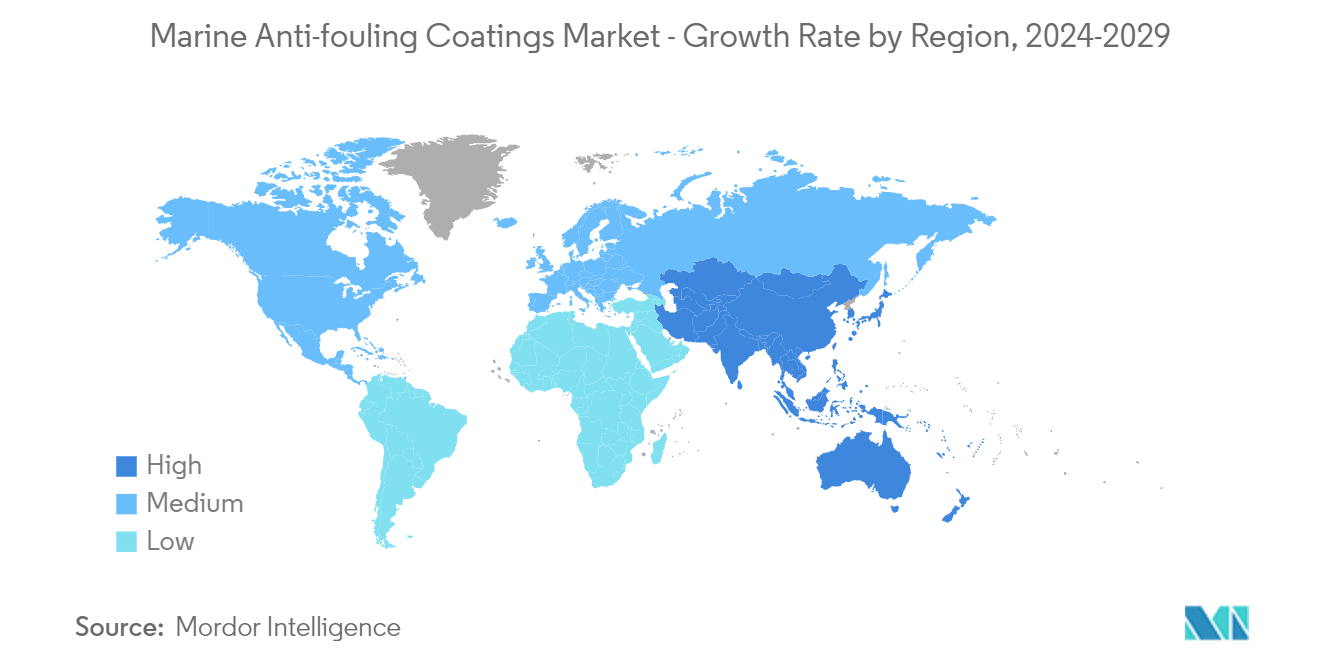Market Trends of Marine Anti-fouling Coatings Industry
Hull Coatings Segment to Dominate the Market
- Antifouling hull coating applications make up most of the market that was looked at. This is because the number of offshore ships, such as cargo and passenger ships, and offshore drilling is growing.
- Most antifouling hull coatings are put on the parts of a ship or yacht that are underwater. This keeps organisms and microbes from growing in the parts that are attached to the hull. The coatings make things look better and last longer. They also have other benefits, like being able to clean themselves and resisting graffiti.
- According to the United Nations Conference on Trade and Development statistics, the total number of ships in the world in January 2023 was about 1,05,500 vessels of at least 100 gross tons (gt), of which 56,500 ships were over 1000 gt. Bulk carriers, oil tankers, and cargo ships made up the majority of the total (20%). With more fleets, there would be more demand for antifouling hull coatings, which protect against corrosion and stick well.
- The UNCTAD statistics also showed that just over half of the world's tonnage in 2023 was owned by Asian companies, followed by Europe, which accounted for 38%, and North America, which accounted for 5%.
- In 2022, China, the Republic of Korea, and Japan were anticipated to build about 93% of all ships in the world. UNCTAD statistics also showed that 86% of ship recycling was done by Bangladesh, India, and Pakistan together.
- According to the Bureau of Economic Analysis, the water transportation industry in the United States added close to USD 54 billion to the economy in the first three quarters of 2022. This is about 35% more than what was added in the same time period the year before.
- Because of these global trends, the shipbuilding industry has been growing, and the demand for antifouling hull coatings is expected to increase in the coming years.

Asia-Pacific to Dominate the Market
- Asia-Pacific dominated the global market share. Asia-Pacific is the largest ship-producing and ship-repairing region in the world, thereby catering to the high demand for various types of vessels, ranging from small boats, ferries, towboats, fishing vessels, and tugboats to vessels for the oil industry, bulk carriers, passenger ships, cargo ships, and container ships.
- In Asia-Pacific, countries such as Japan, China, and South Korea are the leading producers of vessels. At the same time, large shipyards also exist in various other nations of the region.
- According to the United Nations Conference on Trade and Development statistics, Asia-Pacific accounted for over 50% of the number of ships worldwide in 2023. The region had approximately more than 52,750 ships under its ownership out of a total of 105,500 ships.
- China, the Republic of Korea, and Japan were considered the hubs for shipbuilding, as approximately 93% of the shipbuilding happened in these three countries. Apart from that, the recycling of ships was mostly done in Pakistan, Bangladesh, and Japan in 2021.
- Moreover, the Ministry of Industry and Information Technology (MIIT) reported that China continued to be the world's leading shipbuilder in 2023. For instance, in 2023, the country’s newly received orders, shipbuilding output, and orders on hand accounted for 50.2%, 66.6%, and 55%, respectively, of the global shipbuilding market share. Furthermore, China’s shipbuilding output for 2023 was 42.32 million dwt (deadweight tonnage), a rise of 11.8% Y-o-Y.
- According to research by the Chinese Academy of Engineering, Chinese shipbuilding completions in 2023 grew by about 12% Y-o-Y to 42.32 million deadweight tonnes, higher than all other countries combined.
- Hence, bulk orders in line for production may drive the demand for antifouling coatings from the shipbuilding industry at the fastest rate in the region during the forecast period.


